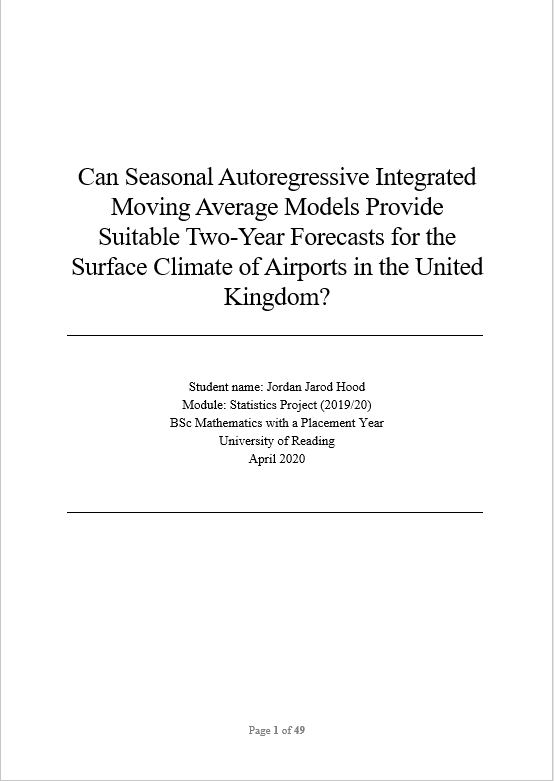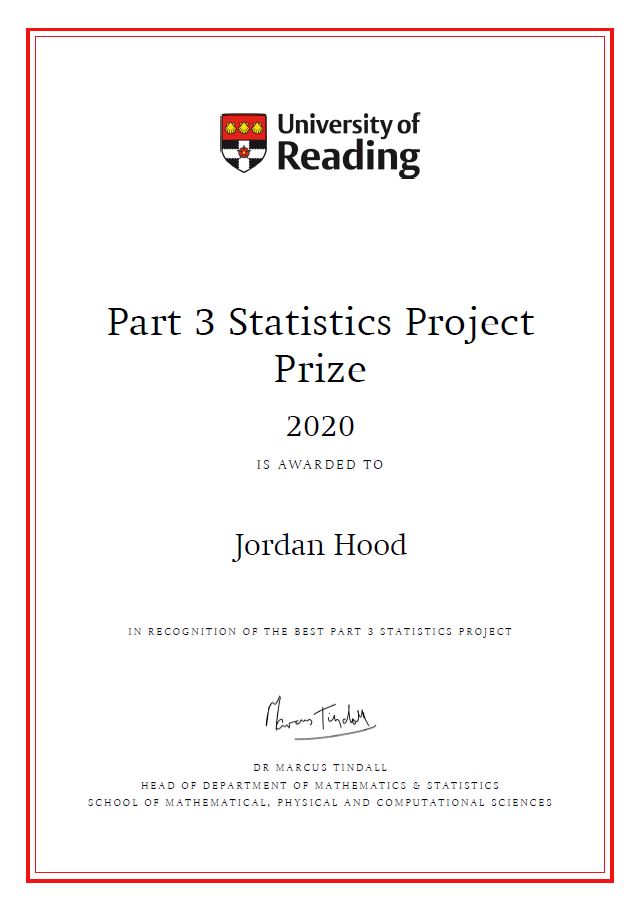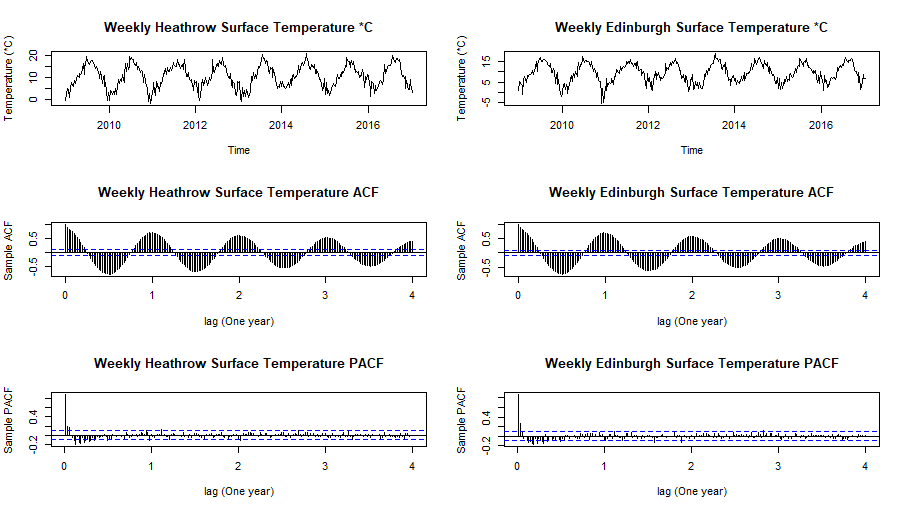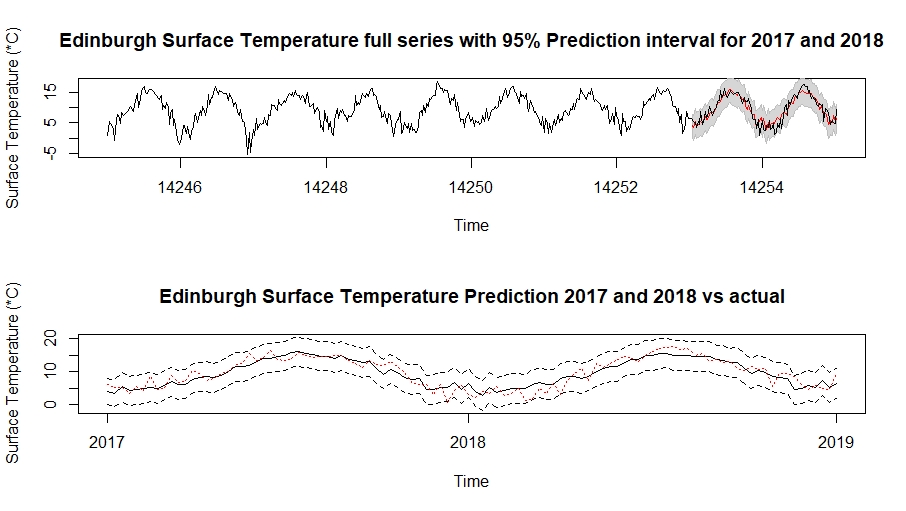Research
Forecasting the Surface Climate of Airports using S-ARIMA models
During my final year of undergraduate I completed a statistical project. This is an independent research project requiring between a 40 and 50 page dissertation analysing a dataset focusing on either survival analysis, time series or modern regression techniques.
I took a huge risk in refusing data prepared by the university of Reading, and instead obtained the data myself from the European Centre for Medium-Range Weather Forecasts. I would go onto be awarded the Statistics Project Prize for the best Part 3 Statistics Project for my work.
As the title suggests, I completed a paper investigating the plausibility of using the popular class of seasonal autoregressive integrated moving average (S-ARIMA) models to forecast the surface level temperature, pressure, and total column ozone at airports in the United Kingdom. The study uses data over eight years from 2009 to the end of 2016 to construct the model, and data from 2017 to the end of 2018 to provide a fair out of sample comparison to evaluate the forecasts. Heathrow and Edinburgh airports were chosen as the sample airports.
The data was acquired from the European Centre for Medium-Range Weather Forecasts. The data was downloaded as hourly forecasts and Climate Data Operators (CDO) were used to condense the data into mean weekly observations. It was found that S-ARIMA models perform very well out of sample, with temperature and total column ozone models containing almost all 104 out of sample observations within their respective 95% confidence intervals.



